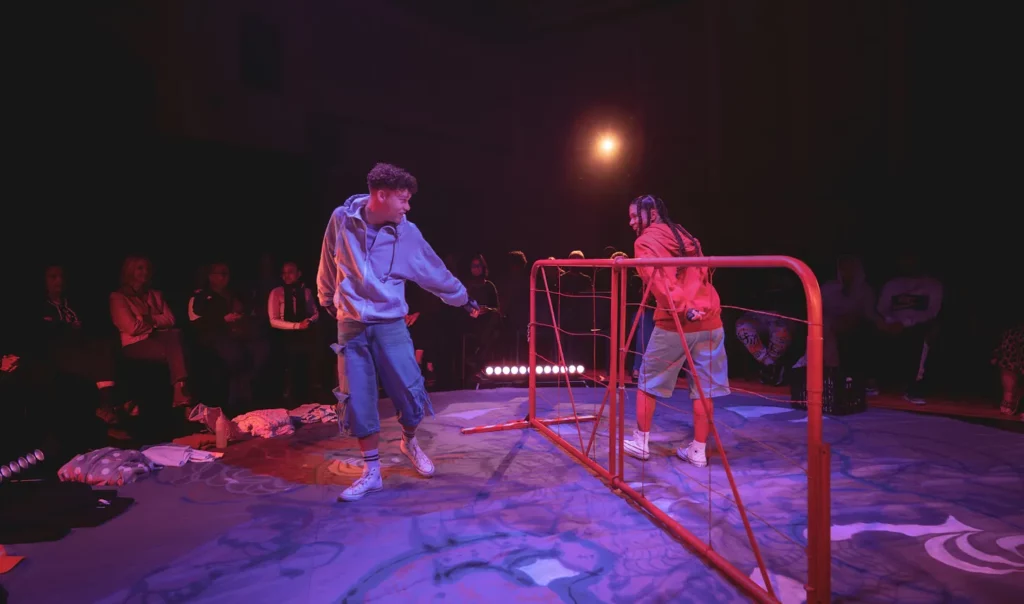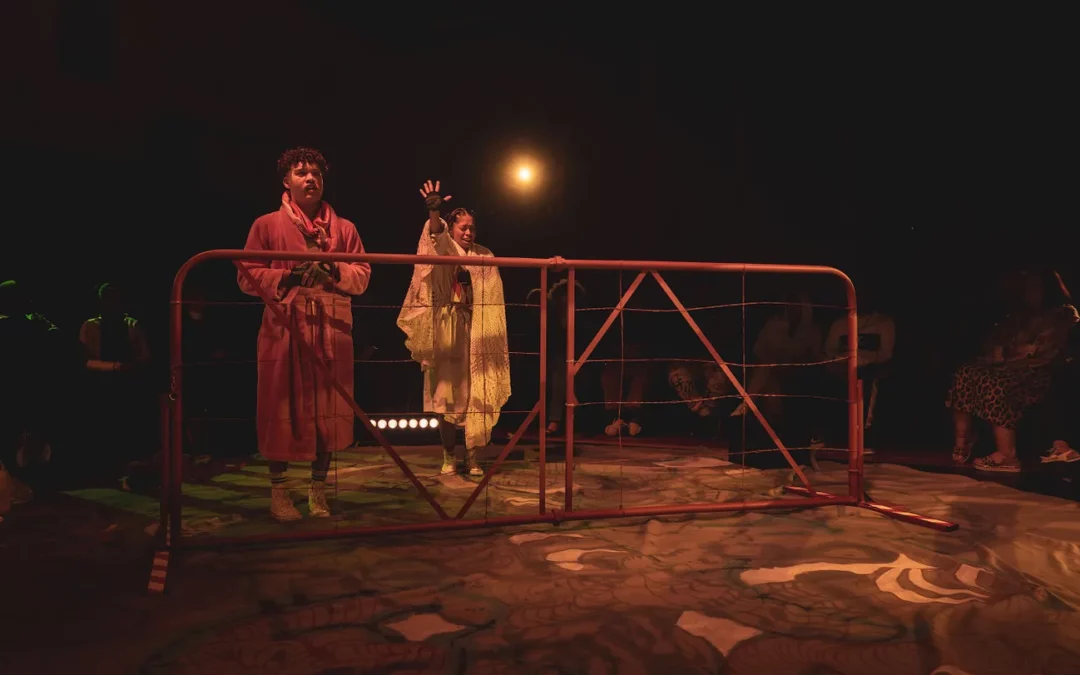Family secrets, handed-down traumas, a search for truth, and storytelling as a ritual of healing: the play examines life’s darkest crevices, and in the process manages to engage, entertain and move.
One problem with theatre-in-the-round: if the on-stage action doesn’t quite grip you, there’s a likelihood that, as your focus starts to wander, you’ll end up watching audience members on the other side of the performance space. Sometimes you catch people on that side staring back; it can be quite embarrassing, and easy to get caught out because the poor actors in the middle will likely be aware that they’ve lost you.
There’s very little chance of being distracted by anything while watching Kompoun, a gripping new show that premiered early in May during Suidoosterfees, Cape Town’s annual Afrikaans arts festival. The show was performed in a no-frills rehearsal room, pretty much an austere black box somewhere in the back buildings at Artscape.
It’s a great venue for a show like this, since something of the makeshift environment filters into the performance, along with a great sense that what matters is not having a cosy, comfortable theatre to perform in, but the nuts and bolts of the storytelling. Kompoun, deftly directed by Lee-Ann van Rooi, is hard-hitting, rough, raw and gritty in the best sense of the word.
And it’s emotionally shattering. I only hope my tears didn’t distract people on the other side of the stage. There were quite a few.
It is a weighty show, adapted for the stage from Ronelda Kamfer’s novel which is something of a literary powerhouse, relentless and cutting. It examines various forms of trauma – family, childhood, generational – in an explicitly and distinctly South African context, conveyed through the observations, experiences and memories of cousins Nadia and Xavier (Xavie) McKinney. The show, despite the awfulness of some of the stories told, is gorgeously entertaining, very funny in places, and it’s fuelled by a wonderful sense of aliveness that’s generated by the two young actors, both bright-eyed and both gorgeous, who held me in their grip from start to finish.

These cousins arrive on stage in calf-length jeans and white Converses, along with plenty of attitude and Gloria Estefan’s “Conga Beat” playing like it’s the theme tune for their dance into battle . They’re on a mission to perform for us, and in so doing enact some kind of much-needed ritual of storytelling. They’re pretty hectic, too, and quite unapologetic.
They’re demanding of our attention, and they prove themselves wholly worthy of it.
Part of the play’s appeal is the language. It’s written in Kaaps (or Afrikaaps), which feels so close to the bone, possesses a kind of inherent poetry and musicality, and is incredibly visual. It is also rough. There’s are lines like, “Net ’n lekker man kry ’n poes op ’n silwer skinkbord!” (only a good man gets pussy on a silver tray), which effectively sums up both the ribald humour and the honest, if callous, kinds of observations that these two young characters are capable of sharing.
Kamfer has said that she gave the novel young narrators because youth is generally that time in our lives before we begin to compromise, before life’s focus turns to selfish risk-avoidance. In other words, we can rely on Nadia and Xavie to be honest and open with us; they have seen a lot and know a lot, but have not shut down the possibility of change, of escape, of hope.
And they are resilient, determined to claim the freedom they crave.
Keep reading on Cachet.
More information on FEC.

